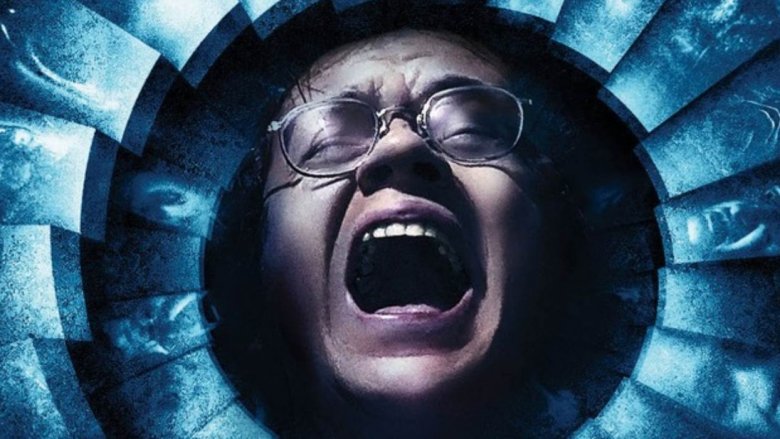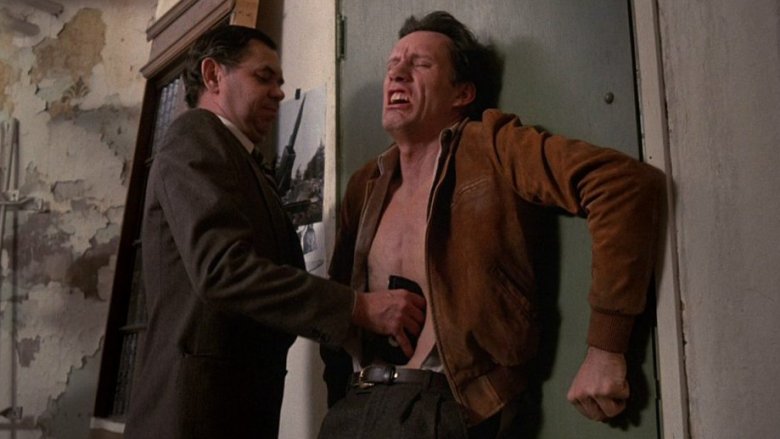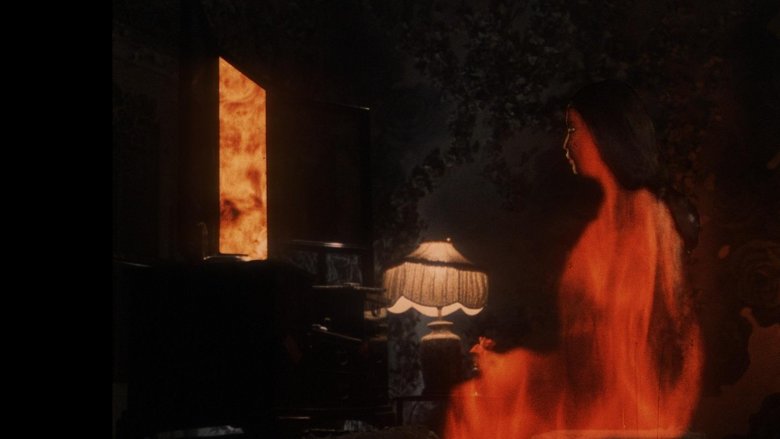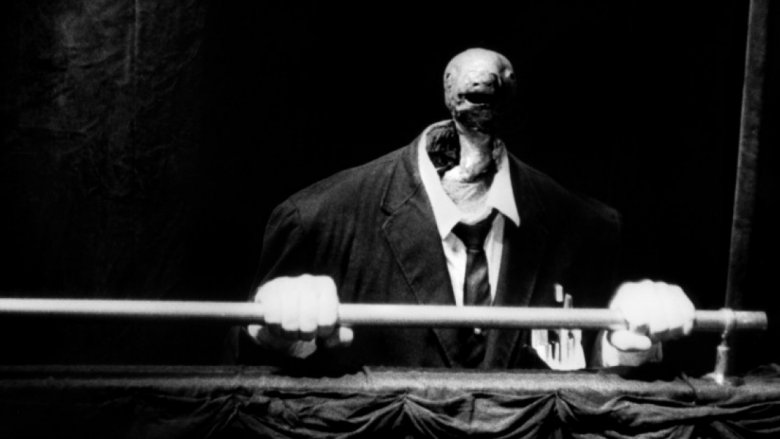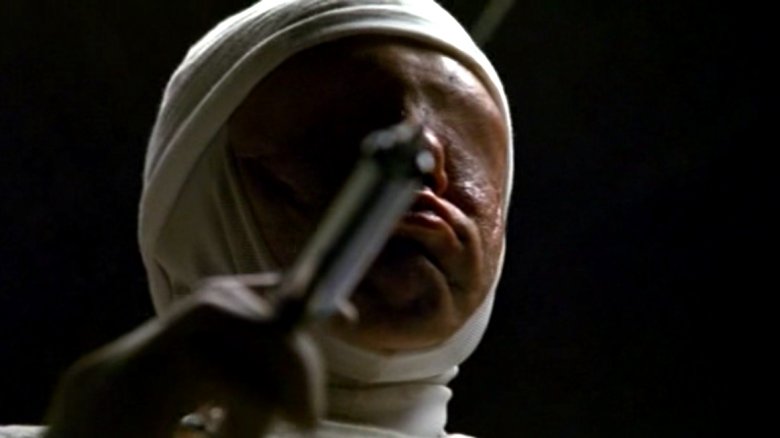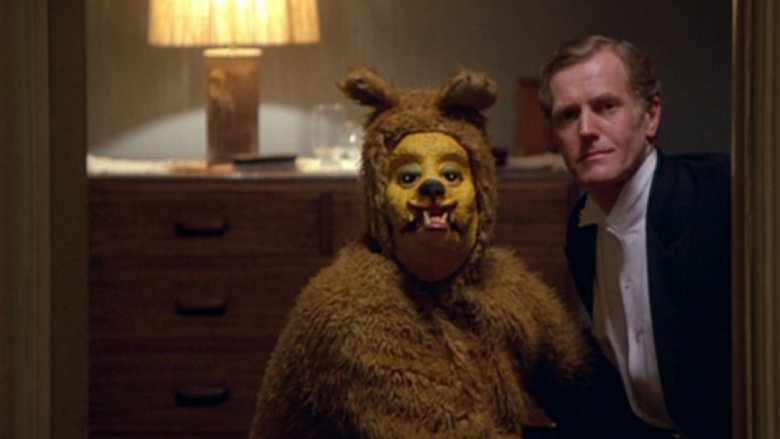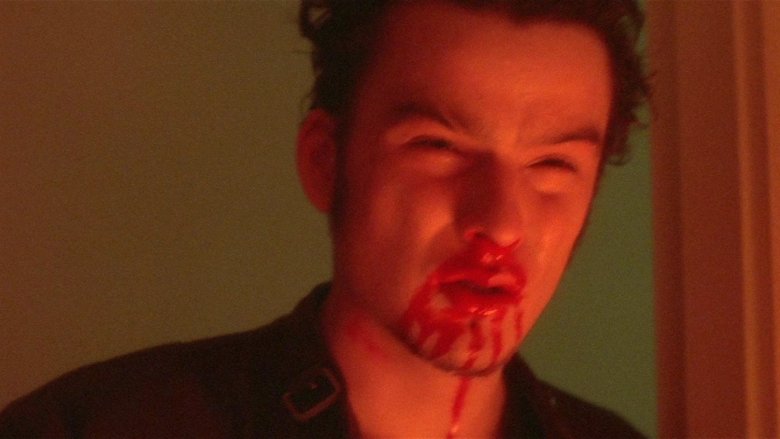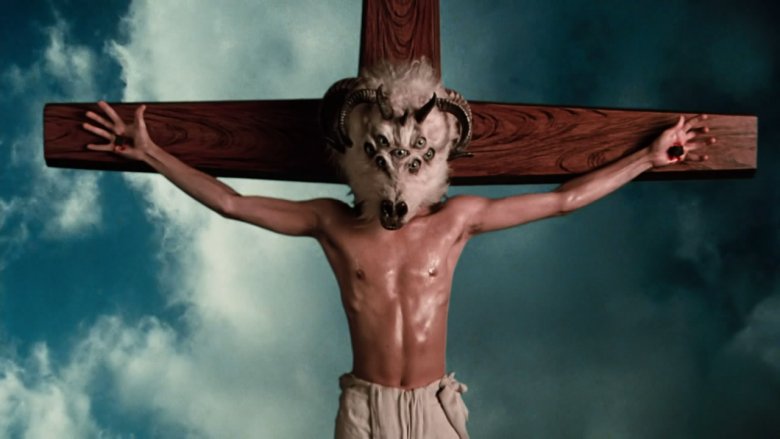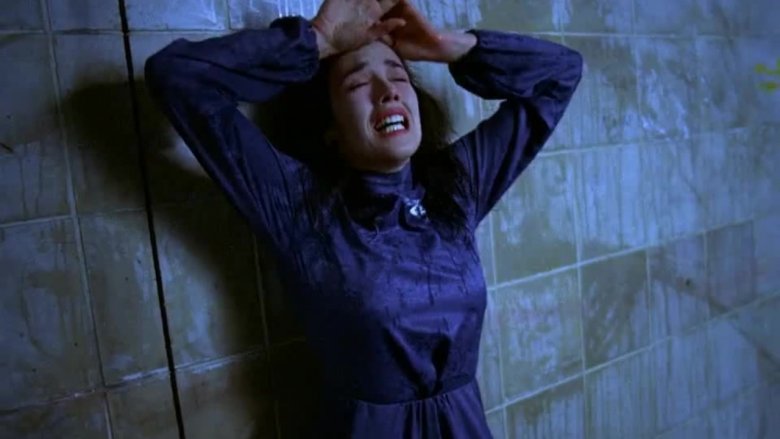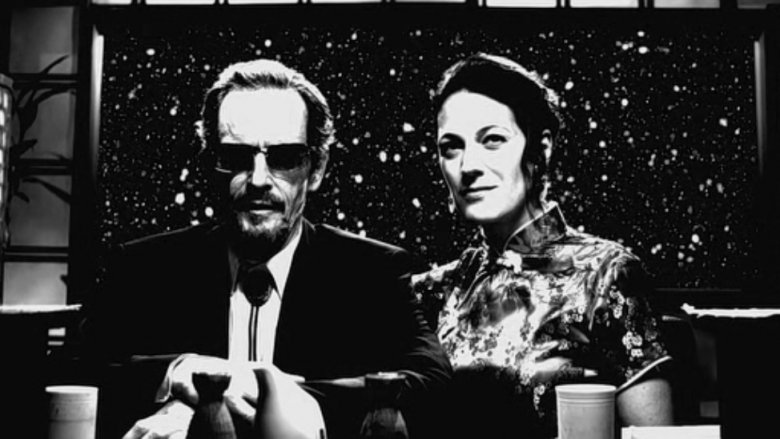The Most Confusing Horror Movie Moments Explained
For many of us, few things are scarier than the unknown. When we know what's going on, even if it's something terrifying, our brain wants to focus on solutions: how to defeat it, or get away from it. That's why horror films often confuse viewers on purpose. If you're not sure what's happening, your brain flails in its search for answers, making the overall experience far more disconcerting.
Once you've experienced the horror by watching a film, however, you may find yourself looking for other answers about what you just saw. Whether it's a mystery set up by the filmmakers to be solved, or something far weirder that's meant to remain mysterious, it's common these days to turn to the internet for answers to the questions a film leaves open. For those looking to better understand your favorite baffling moments of terror, here's a look at some of the most confusing moments in horror films — and what's behind them.
Videodrome
Videodrome arrived in 1983 courtesy of writer/director David Cronenberg, and those may be its two most defining facts. The world was obsessed with new advances in video technology at the time, particularly the arrival of affordable VHS tapes and recorders. Cronenberg, meanwhile, has always been obsessed with the horrific and viscerally disgusting aspects of the human body. It all came together with Videodrome, in which sleazy TV producer Max Renn (James Woods) grows a new orifice in his abdomen that video tapes can be inserted into in order to give him hallucinations and control his mind.
While the disturbing transformation turns to be just one part of a larger conspiracy within the movie's plot, it also has an obvious symbolic meaning. As Renn and other characters watch videos of sex and torture, there's a facade of distance between viewer and subject. What the appearance of Renn's VHS slot seems to indicate is that Cronenberg views this distance as false. When you allow these images into your eyes and brain, they become just as much a part of you as if someone inserted them directly into your guts. This tape-centric video paranoia may seem dated decades later, but the message is still relevant, even if the technology has changed.
Antichrist
Lars Von Trier's Antichrist is a disturbing movie, one that takes place in a world not quite our own. It begins with the death of a small child, and then follows the unnamed parents (Willem Dafoe and Charlotte Gainsbourg) to a secluded mountain cabin where the husband is using psychological techniques in an attempt to help the wife with her extreme grief. Once there, things descend into madness as Gainsbourg's character expresses her belief that all women are evil, and then does her best to prove it by torturing her husband and mutilating herself. It also comes out that she was mistreating their son, and may have consciously chosen to let him die. Along the way there are a lot of references to witches, and three evil spirits appear in the forms of a fox, a crow, and a deer.
At the end of the film, a heavily injured Dafoe leaves the cabin alone, limping his way back toward civilization. Suddenly he sees mysterious figures coming up the hill from a distance. Soon the entire hill is swarming with a vast crowd of faceless women, who move past him as if he's not there. Are these the spirits of the witches of the past, or of the women who've been falsely accused of witchcraft? The movie never says — it simply ends on that image. Regardless of who these women are, however, they serve as a reminder that although the narrative embodies the male and female genders in just two people, the world is filled with women (just as it's also filled with men). For someone who has been so thoroughly victimized by a woman he loved, that must be a terrifying prospect.
Hausu
1977's Hausu is practically a parade of dreamlike and inexplicable moments from beginning to end. Based in part on actual nightmares reported by director Nobuhiko Ôbayashi's young daughter, it follows a group of schoolgirls visiting a haunted house as strange forces pick them off one by one. One is eaten by a grand piano, another disappears amid a pile of fallen mattresses, and so on. Perhaps the most inexplicable part of the story, however, is what happens to Gorgeous, the niece of the old woman who owns the house. She's putting on makeup at a vanity upstairs when she becomes overtaken by flames. She doesn't spontaneously combust, exactly. She's not consumed by flames so much as her face and body shatter to reveal flames underneath. When we see her again, she's seemingly taken on her aunt's role as the demon bride who embodies the evil spirit of the house. In fact, she's the only one who appears alive at the end, although whether she's really alive and whether she's really still herself are both left in doubt.
If you pay attention to the themes of the movie, all of this actually makes sense. The demonic presence in the house is powered by the misery and envy of other women. Like her aunt, who lost her fiancé in the war as she watched all the women around her marry, Gorgeous is also deeply sad and very jealous. She still mourns her late mother, and immediately hates her father's new girlfriend. That fire that appears within Gorgeous is the flame of negative emotions that powers the house. She's fated to become its new mistress, replacing her elderly aunt. In fact, that's why she and her friends were called to the house in the first place: so she could take it over (or it could take her over, if you prefer) while her friends could be the food that fuels the transition.
Eraserhead
Perhaps the strangest moment in David Lynch's very strange 1977 debut feature Eraserhead is the beginning of the sequence that gives the film its name. After going to bed with his attractive neighbor, protagonist Henry Spencer (Jack Nance) finds himself in the kind of curtained backstage-to-reality space that Lynch would return to years later on Twin Peaks. As he hides in a corner, something unexpected happens: his head pops off and falls to the floor. Another smaller head is revealed beneath it, resembling Henry's deformed mutant child. His detached human head gushes blood until it falls to the sidewalk outside, where it cracks open to reveal his brain. A little boy grabs the head and takes it to a pencil factory, where the brain is used to make erasers.
It feels almost facile to offer an explanation for this scene; the film defies explanation throughout, which is how Lynch likes it. The mutability of identity is a recurring theme in Lynch's work, however, and Henry's loss of his head and face implies that who he is, or thinks he is, doesn't matter in the context of the movie's world of sexual and reproductive horror. That his brain is the raw material from which erasers are made seems to point to the human tendency to refuse to think about our most horrific experiences, simply "erasing" negative thoughts and experiences from the mind.
Jacob's Ladder
Jacob (Tim Robbins), the titular protagonist of Adrian Lyne's 1990 film Jacob's Ladder, is a Vietnam veteran trying to hold his life together in 1975 Brooklyn while coping with visions and what appear to be supernatural encounters of a distinctly demonic variety. His bizarre experiences climax in a trip to a horrific dilapidated hospital filled with misshapen, mad, and mutilated people, and piles of severed limbs strewn about the floor. He's restrained as he struggles to figure out what's going on, and then a doctor with no eyes (no eye sockets, even!) injects a hypodermic needle directly into the middle of his forehead.
There's no way this hospital could exist, and it's certainly unlikely that a person born without eyes could be a doctor. So what's going on here? Is he hallucinating because of his war trauma, and the medical experiments that might have been performed on him there? Not exactly, because the most important thing that happened to Jacob in Vietnam is that he died. The world he exists in throughout the film may look at first like Hell, but it's more complex even than that. The monsters he sees don't represent the underworld, they represent the horrors of the Earthly realm, which he can't seem to leave behind. Once he accepts that he's dead, the horrific imagery subsides and he's free to ascend to Heaven on the ladder that bears his name.
The Shining
Stephen King's novel The Shining is about a large hotel full of ghosts, and the book itself is full of the backstories of those ghosts — who they are and why they haunt the Overlook Hotel. For the 1980 film adaptation, director Stanley Kubrick chose to leave out most of the ghosts' origin stories, focusing instead on the visual horror and the psychological effects on the Torrance family. Of all the inexplicable hauntings seen in the film, by far the strangest is a moment when Wendy Torrance (Shelley Duvall) comes up some stairs and sees an open door down the hall. In the room, a man in a tuxedo is lying back on the bed, while a figure in a grotesque animal costume leans over him. Then the man and the beast both look out the door and see Wendy, causing her to run away in horror.
The duo is never identified in the movie, but referring back to King's novel makes it clear that the man in the tux is Horace M. Derwent, onetime owner of the Overlook. In the animal costume is a man named Roger, who was in love with Derwent. The debauched hotel owner got Roger to dress up in a dog costume and do humiliating tricks for him at the Masked Ball. The costume in the movie doesn't look particularly doglike (many people refer to it as a bear), but the analog to the novel is still clear, since there aren't any other furries in The Shining.
Lost Highway
If Eraserhead touches on David Lynch's fascination with the mutability of identity, his 1997 film Lost Highway revolves around it. The movie begins with Fred Madison (Bill Pullman), who worries that his wife Renee (Patricia Arquette) is unfaithful. After encountering a strange and sinister Mystery Man (Robert Blake), Fred murders Renee and is arrested. That's when things get really weird. In his jail cell, Fred Madison transforms into a completely different man, Pete Dayton (Balthazar Getty). Dayton then has his own story, including a doomed romance with an adult film actress named Alice (also played by Patricia Arquette). Ultimately, Alice makes clear to Pete that he can never possess her, and Pete turns back into Fred.
So why does the protagonist suddenly turn into a completely different character, played by a different actor, in the middle of the movie? While Lynch will never explain anything himself, the transformation seems linked to Fred's insecurities. Fred is a middle-aged musician with a younger wife that he fears he can't satisfy. As Pete, he's younger and more virile, a mechanic who gives off a dangerous charisma. Ultimately, however, Pete can't have possession of Renee/Alice any more than Fred can, triggering his return to his original form. Whether this is meant to be objectively happening or just in Fred's head is an open question, as is so much of what happens in any David Lynch film.
Altered States
Ken Russell's 1980 film Altered States is every bit as hallucinatory as the name implies. Under the influence of multiple drugs (most notably a fictional Mexican mushroom), protagonist Eddie Jessup (William Hurt) spends much of the movie having surreal visions which then lead to horrifying transformations. Most of those visions directly relate to the plot in ways that are easy to discern — Eddie's dying father, his ex-wife (Blair Brown) as a lizard, stuff like that — but one of the film's most memorable images is never explained. It makes sense that Eddie, obsessed as he is with religious imagery, would have visions of Christ on the cross. The question is, why does this Christ have a multi-eyed, multi-horned ram's head?
The answer to that isn't included in the movie at all, but it's explained in the Bible. This imagery comes directly from the Book of Revelation, specifically Chapter 5, Verse 6: "Then I saw a Lamb, looking as if it had been slain, standing at the center of the throne, encircled by the four living creatures and the elders. The Lamb had seven horns and seven eyes, which are the seven spirits of God sent out into all the earth." Sure enough, if you look closely, the creature in the movie does indeed have seven horns and seven eyes. So while the bizarre vision may look Satanic at first glance, and is definitely frightening, it's actually a literal depiction of an image that represents Christ in the first place.
Possession
Possession, the 1981 French film directed by Andrzej Zulawski, is arguably less horror than psychological drama, focusing on the divorce of Anna (Isabelle Adjani) and Mark (Sam Neill). At least, it would be a drama about divorce, except for the reveal that Anna is keeping a tentacle monster in her bedroom and having sex with it. That alone pushes Possession not just into the realm of surreal horror, but out to the farthest edge of that genre. It's such a weird twist that it dominates cultural memories of the movie.
So what is that thing? Where did it come from, and how did Anna come to be so friendly with it? The real answer is that this isn't the sort of film about which you can ask those kinds of questions. The tentacle monster isn't a biological creature that exists in an objective reality. It's a physical manifestation of Anna's sexual desires and the shame she feels about them. As the movie goes on, it evolves into Mark's doppelgänger, just as his new love interest Helen (also played by Isabelle Adjani) is Anna's doppelgänger. In that sense, the movie is a bit similar to Lost Highway, but with less cars and more tentacles. The point of the tentacle monster is how gross it looks and how disturbing it is to see it wrapped around Adjani's body. All questions of what's going on come second to the visceral response you have.
Pontypool
Pontypool fits within the zombie genre, but takes it in a radically new direction built on totally unique ideas. Set in a talk radio station in a small Canadian town, Bruce McDonald's 2008 indie film is about a virus that develops in the English language. Certain words are infected, and those who say them risk becoming mindless predators who repeat whatever words and sounds they hear. The lead characters are radio shock jock Grant Mazzy (Stephen McHattie) and his producer Sydney Briar (Lisa Houle), who do their best to figure out what's happening from within the radio station that they can't leave.
By the end of the film, Grant and Sydney have figured out that the infection happens at the moment the mind understands the meaning of an infected word, and that the only way to fight it off is to abandon the meanings of words and convince yourself they mean other things. This leads to a final scene, placed after the credits, where Grant and Sydney appear to be somewhere in Asia. They have a brief discussion, but nothing they say makes any sense. Where are they? How did they escape Pontypool? Have they lost their minds?
The answer lies in the abandonment of meaning. It's not just the English language that has lost all meaning in the face of this deadly infection — the language of filmic storytelling has been stripped of meaning as well. The final scene of Pontypool doesn't make sense because the notion of "sense" has become dangerous. This serves as an excellent illustration of the fact that not every confusing scene can be explained. Sometimes the confusion is a necessary part of the experience of watching a movie, and it's best just to revel in it.
